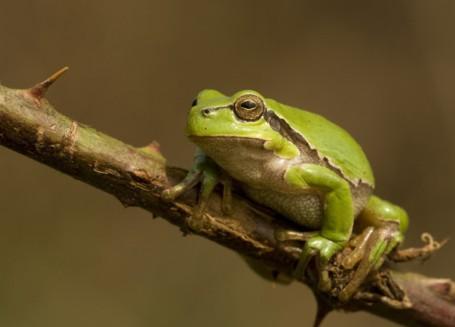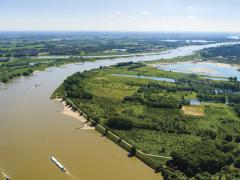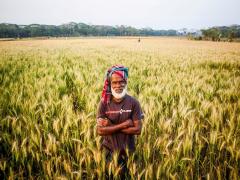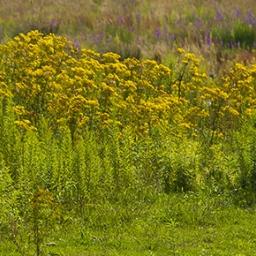Nature Balance 2009
Current policies are delivering benefits for Dutch nature. The area devoted to nature conservation is increasing and the environmental and spatial conditions are improving. Nevertheless, the trends are not strong enough to achieve the stated conservation objectives within the desired period. Policy could focus more on the unique natural values which have their origin in the specific conditions found in the Dutch delta. Another promising option is to expand and link together the nature conservation areas, in combination with the further improvement of environmental conditions. An additional possibility is to make better progress in implementing the agreements under the Rural Areas Investment Budget.Continuity and planning protection are important ingredients for making the landscape policies more successful. The accessibility and attractiveness of agricultural areas will benefit from a more forceful policy for strengthening the green and blue landscape elements.
What is the Nature Balance?
The Nature Balance is an annual assessment of the natural environment and landscape in the Netherlands. It monitors policy developments in the field of landscape and natural environment and gives a view on emerging perspectives. The main conclusions of the Nature Balance 2009 are the following.

Clear and workable agreements between central and provincial government needed for better decentralisation of tasks
The decentralisation agreements between central government and the provinces for the delivery of the Rural Areas Investment Budget are a step forward for nature and landscape policies. Decentralisation can make these policies more effective because it facilitates 'custom work' in area-based planning processes and because the involvement of diverse parties ensures support for the results of the negotiation process. However, this has not yet materialised in practice. Achieving the targets for nature and the landscape in specific areas requires clear and workable frameworks that not only secure central government objectives but also allow room for local objectives within these areas. The leeway for negotiation on nature policy objectives in area-based planning processes is constrained by detailed agreements and preconditions set by central government and the provinces, which leaves little room for local objectives. For landscape matters, the government's policy framework is not clear enough.
Local improvements in ecosystem quality; further expanding nature conservation areas a promising option
The consistent nature conservation and restoration policy pursued by central government over the years has led to improvements in local ecosystem quality. This can be seen, for example, in the return of rare species in habitat creation and restoration projects. The total area devoted to nature conservation has increased and the pressure on the environment has fallen. However, in recent years both the rate of expansion of the nature conservation area and the decline in deposition of nitrogen have stalled. The species with the greatest demands on their environment are increasingly threatened, elongating and 'reddening' the national Red Lists. The effectiveness and efficiency of nature policy can be improved by increasing the size of nature conservation areas and linking them together, and by improving environmental conditions.
Landscape benefits from continuity and planning protection
The policy for the National Buffer Zones has been successful through a combination of continuity, clear planning safeguards and investments in greenspace. National Buffer Zones protect rural zones between the cities of the Randstad, to keep a green zone around these cities and conserve the landschape. This success can only be continued if the central government does not alter the boundaries of the National Buffer Zones in order to permit building development within these zones, as it did recently via the draft Spatial Planning Order. Continuity and planning protection also helps towards meeting the targets for National Landscapes and National Motorway Panoramas, for example by clarifying the frameworks via the second package of measures in the Spatial Planning Order in combination with long-term arrangements for landscape management and development.
Farmland is not automatically attractive and accessible for recreation
The nature and landscape values of agricultural areas are continuing to decline. Concentrating efforts on enhancing green and blue landscape elements will not only permit agriculture to remain competitive, but will also conserve nature and landscape values. This may also provide a boost for recreation. However, because central government funding is allocated to the National Spatial Structure, few resources are available for the maintenance of landscape elements in agricultural areas.
Making trade chains more sustainable requires international agreements
The Dutch ecological footprint abroad - the area of land needed for the production of our domestic consumption - remains a point of concern. Progress in reducing the biodiversity loss in the national footprint abroad by making product chains more sustainable is slow. The Netherlands is a small and densely populated country and is highly dependent on imports for its domestic consumption. The ability of the Dutch Government to influence foreign suppliers of raw materials to produce in a more sustainable way is limited due to competing international forces. This makes it important to raise the issue of sustainable production more forcefully in European circles and in the World Trade Organization, an example being the current case of biofuels in the European Union.
Authors
Specifications
- Publication title
- Nature Balance 2009
- Publication date
- 22 September 2009
- Publication type
- Publication
- Publication language
- English
- Product number
- 193




